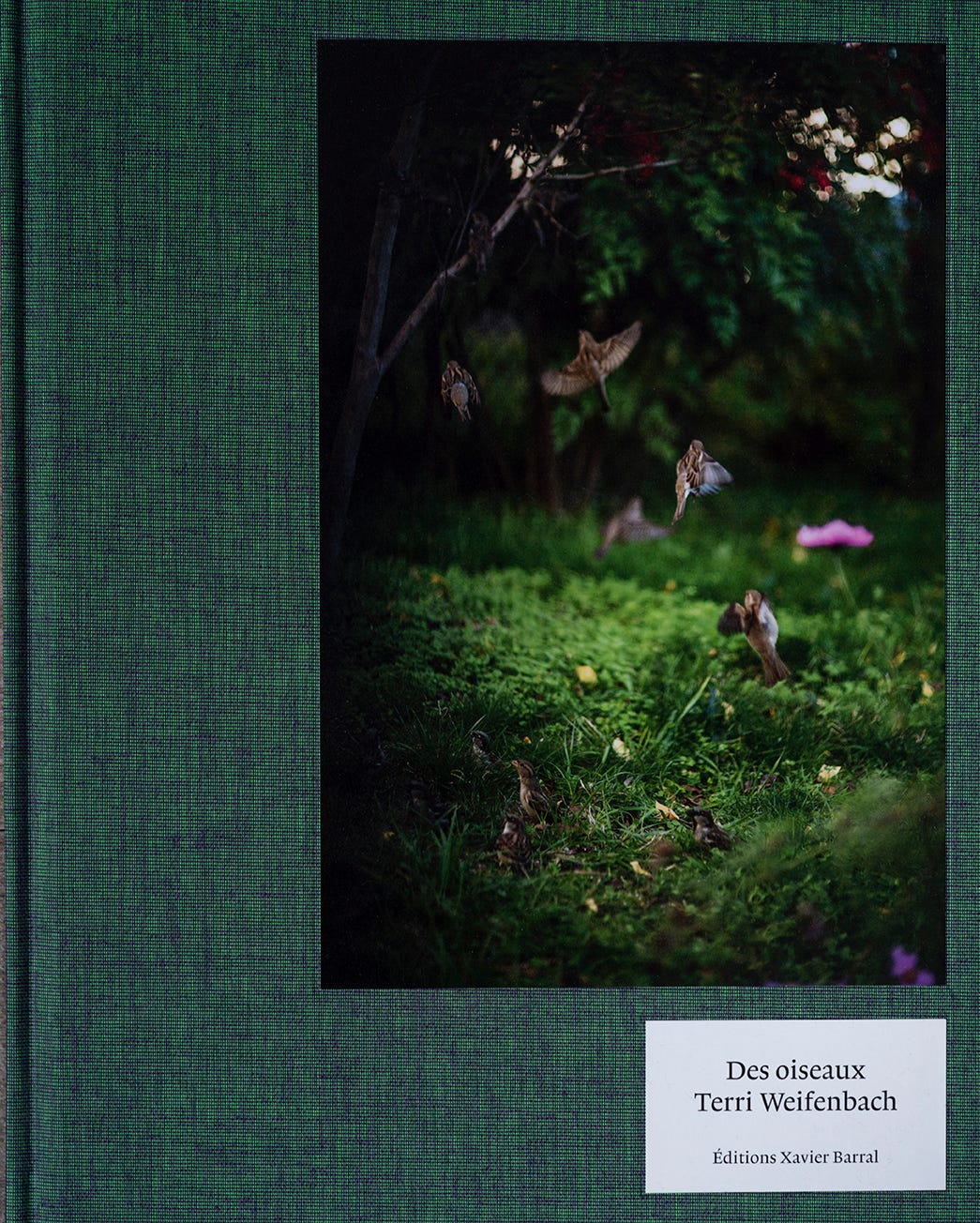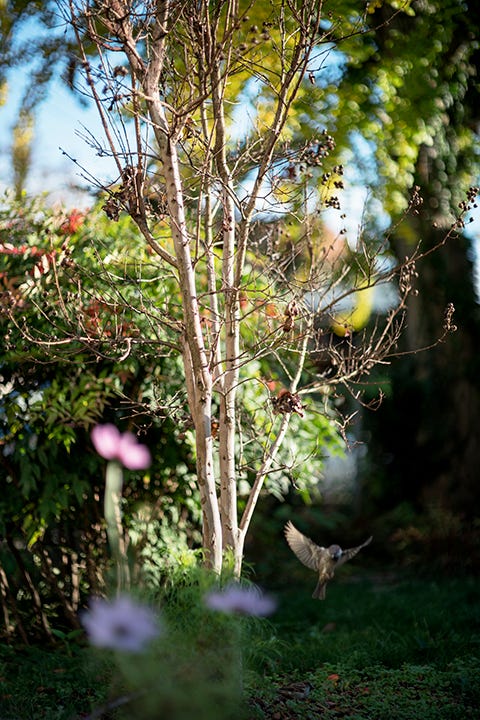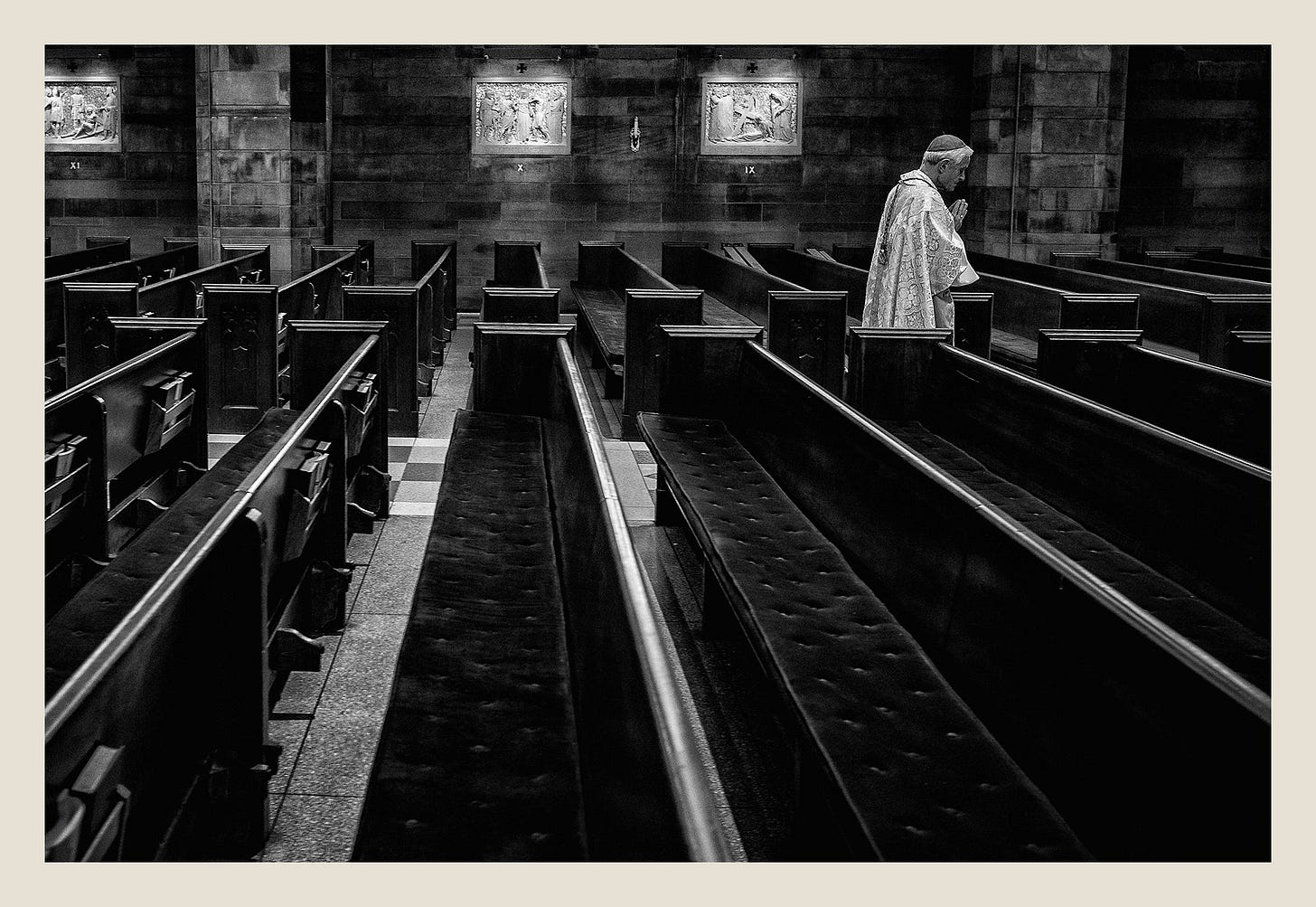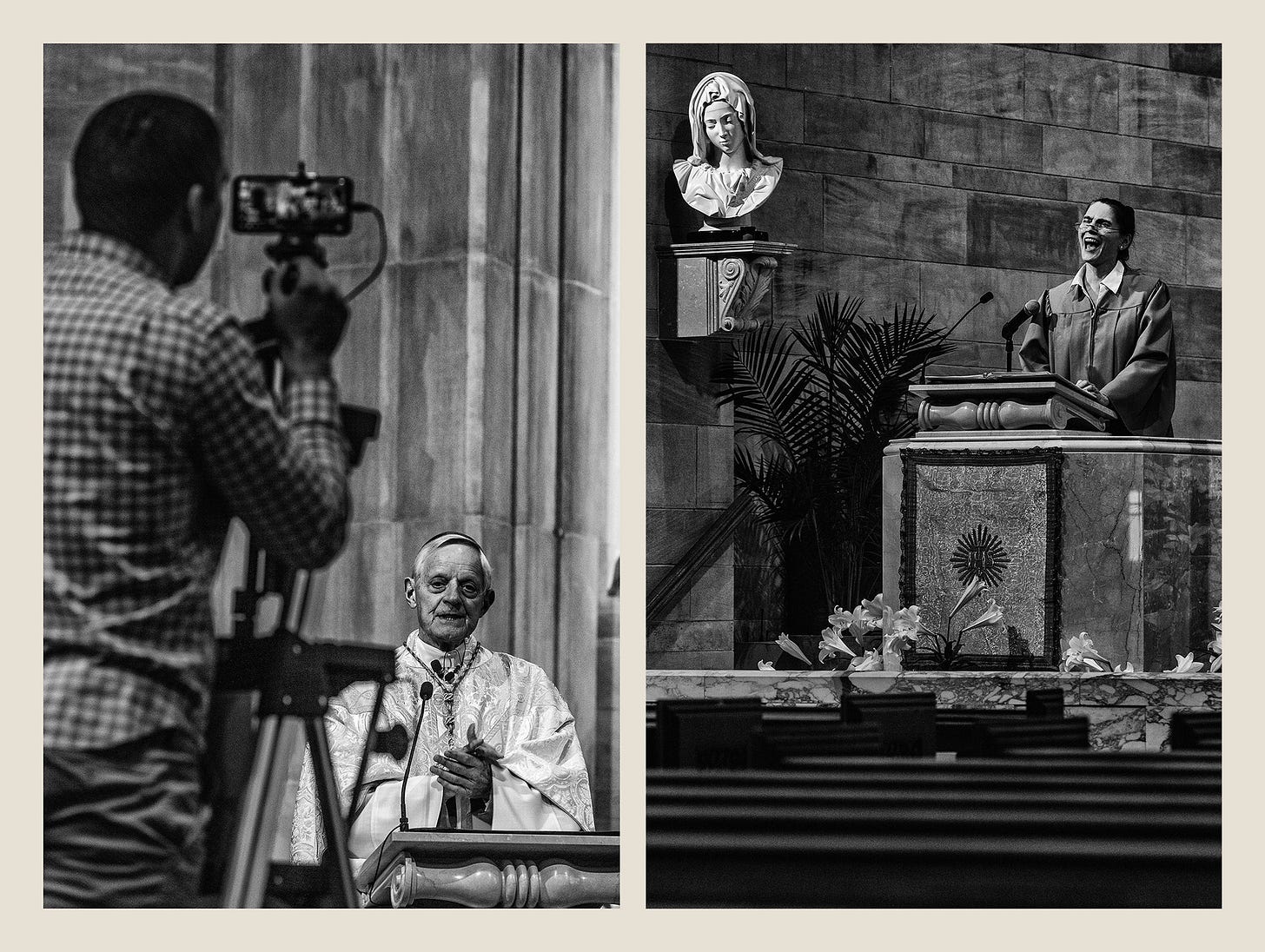Hello Light Reading friends, I hope you’re staying healthy and sane. This newsletter’s a little different than previous ones in that it starts with an interview. I’ve followed Terri Weifenbach’s work since I came across her book Des oiseaux (“The birds” in French), which she photographed entirely in her backyard in Washington, DC. It feels to me like a set of images right for this time and I hope you’ll enjoy it.
As always, I appreciate you sharing this newsletter with others.
An Interview with Terri Weifenbach

I want to talk with you most about your latest book, Des oiseaux. Given the times we’re currently living through, I’m very attracted to the constraints of this series - that the images were all made in your backyard. Can you talk about how this work began, and was it a deliberate decision to make these photos that are literally so close to home?
The birds made me do it. Actually, that is almost true. I had been preparing for a solo museum exhibition in Japan, getting up early to communicate with the curator there and staying up late readying files, editing. I took to having a glass of wine on my porch about 4pm for a break in the day. I had spent years planting the yard to attract birds and butterflies and it was doing just that, but at this moment the visitors were neighborhood English sparrows that I’d always overlooked for more colorful or less common birds. And I’d not planted with intention to photograph, just to listen, watch. As I sat there trying to go blank, I realized these birds had a sort of choreography and grace I’d not been aware of previously. So I started taking the break on the porch with a glass of wine and my camera. I photographed and one day I made an image, actually the one on the cover of Des oiseaux, that I felt showed the grace I was witnessing, so I knew I could continue.

Your photographs feel less like visual records of places than a document of the emotional experience of a place in a certain moment. Would you agree?
I agree completely. I’m quite anti-document. The Des oiseaux images are not about my backyard and barely about the birds themselves, at least I doubt they’d ever be found on the pages of a birdwatcher’s magazine. Sometimes, I feel I’m photographing something we’ve lost, and there is no way I can describe that in words.
You’ve done projects all around the world. What’s your process like orienting yourself to a new place in order to photograph it?
I’m usually brought to new places by commissions and residencies so there is a timeline and an expectation, usually culminating in an exhibition some time later. The situations are often quite different, but I’m looking, always. I’m careful to not be fooled by the inspiration of seeing something different than I’m used to, as that’s a foil and wastes time. Walking, walking alone with my camera, so I can see, is important for recognizing what I can photograph. This is the first step usually. Jet lag can be disorienting so having a couple days to settle is preferable.
You’ve taught at a university near to my home. I’m curious what you’ve found effective in helping guide students on their photographic path (methods, exercises, etc.)
This is very much why I loved teaching…. I had an assignment for beginning students where they each had to choose an object, one object, not a subject and photograph it for six weeks. Every week they needed to have a minimum of 8 images to show me until the 6th week when we edited them to 8-10 images total. If they chose a puddle, they couldn’t photograph puddles, they picked one puddle and stayed there. If it dried up, they would be photographing where it had been. At about week three they’d start to come in wanting to change the object…. Why? Because it was boring, they’d done it, it was over, wrung out. “This is where it starts to get interesting” I’d say!! “Go back and stay there awhile, there is more there, I promise.” It is actually the transition, if working, where the student stops “looking for” and starts to receive, starts to see things not obvious and maybe even only theirs.

Apologies for a somewhat technical question, but the photographic worlds you create in your work tend to have very selective focus. Can you talk a little bit about this decision and maybe how it relates to the feelings you’re trying to evoke in your work?
I found the actual technique by accident on April 12, 1992 with a roll of color film. I’d not shot color film seriously before that. My cameras of choice for years (until 2010 or so) were the Leica M2 and M6. Both are rangefinders so one does not see any focus until the film is developed. I found this fascinating and experimented with it quite a bit, learned it. While doing this I realized that selective focus was a good way to show what to me was important and it was beautiful as well. I was lucky because the Leitz lenses maintain contrast and saturation when out of focus, so the backgrounds didn’t recede, they stayed even with the foreground. This satisfied me as it was towards a painter’s sensibility. Spatially this combo made the contents of the 35mm rectangle more complex, and for me, more interesting.
I first encountered this book pre-quarantine. I wonder if you think of this work, or your work in general differently in our current times?
I mentioned earlier that I feel somehow as If I’m photographing something that has been lost. It could be the moment, since they are gone as soon as we experience them, or extending A LOT it could be our interdependent life with city birds. Not many people seem to think of the common sparrow as a wonder in our world. Photographing them, spending time with them, certainly changed my view. And then, losing what the birds represent, flight feels like freedom…. all the poetics of wings. All I could think about when first in confinement was how brilliantly the earth is reacting to our injurious ways, by shrugging us off and leaving nature. And I had thought we’d lose nature.
What are your days like since lockdown?
Lockdown for me is in the 5th arrondissement of Paris. High up on the 6th and 7th floors (my studio is the 7th) with a balcony, I have a good view of the street and birds, generally crows, fly by at eye level. I’m busy putting together a book I’ve been photographing for for five years. If I could go outside I suspect I’d be drawn to photograph springtime and bookmaking might have to wait, but I cannot go out….
Purchase Des oiseaux from Photo-Eye.
—

On Sunday morning, I drove to the Catholic church in our neighborhood to photograph their Easter Mass. Inside the church, candles were being lit and the altar was overflowing with a verdant mass of daffodils and white lilies.
To the left of the altar, a man stood on the third step of a ladder, adjusting a small tripod connected to a smartphone that he would use to live stream the service. He would remain balanced on there for the next hour. Watching the video on the church’s website later, I’d hear his voice sometimes drowning out the Monsignor’s during the hymns.
Behind him were thirty-four rows of pews, identical in their stout, wooden backs, their snug cubbies holding hymnal books and their lean, teal seat cushions. Thirty-four rows, empty. Empty, I should say, except for three parishioners who somehow had decided they would attend this service in defiance of the DC government’s stay-at-home order.
The service began as always, with the processional led by a priest swinging the thurible (definitely had to look that one up), filling the space with rich, cloudy incense that seemed to hover over the group as they made their way to the altar. The Easter verses of burial and resurrection were recited as they always have been.
If you were to measure the normalcy of this moment by what was happening at the front of the church, it would be hard to notice anything that seemed off. But the cantor sang songs of Hallelujah to a space—not to people—to only the silent apostles rendered in stained glass with bluish, overcast light passing through them. The font of holy water had been emptied and church bulletins at the entrance advertised events that had passed without ever happening.

But, despite all this, the service felt reassuring and hopeful. I don’t count myself as a very religious person and it’s been awhile since I’ve been inside a church, but the practice and tradition of the service felt stabilizing. In performing to this empty space, they were upholding a belief that they would continue on, that what happens here would endure. And that one day, those pews would again be filled with fidgeting children, elderly couples in their Sunday’s best, and altar boys and girls in scratchy, white robes.
The great Nick Cave wrote this last week and it seems to me to cut to the heart of this moment:
By forcing us into isolation, it [coronavirus] has dismantled our constructed selves, by challenging our presumed needs, our desires, and our ambitions and rendered us raw, essential and reflective. Our sudden dislocation has thrown us into a mystery that exists at the edge of tears and revelation, for none of us knows what tomorrow will bring.
Currently

🌱🐿 I’ve been getting ready to transplant my seedlings, checking the weather to make sure we have no more days approaching freezing. I set the plants outside for a few hours each day to harden them off. Yesterday, when I went out to check on them, I saw a squirrel beginning to root around. A few minutes later, and the whole tray would’ve been dug up and destroyed. Here’s to some good timing.
🍵🍚 I’m drinking a lot of genmaicha, which translates to “brown rice tea.” The story goes that a tea merchant was trying to stretch out his supply of green tea, so he added roasted rice to it. The rice gives the tea this warm, nutty flavor that’s perfect for a cold Spring morning. I get mine from Tealyra.
Thanks for making the time for this. I hope you’re staying well.
—
If you signed up for this and don’t know who I am, my name’s Stephen Voss and I’m a photographer living in Washington, DC. I photograph politicians for magazines, and, occasionally, bonsai trees. You can see my work on my website, and Instagram.
I started this newsletter because I missed creating things and sharing them with the world. I missed making new things that didn’t come from assignments.
If you’ve made it this far and enjoyed the newsletter, I would greatly appreciate you sharing it by using the link below or posting someplace social.



